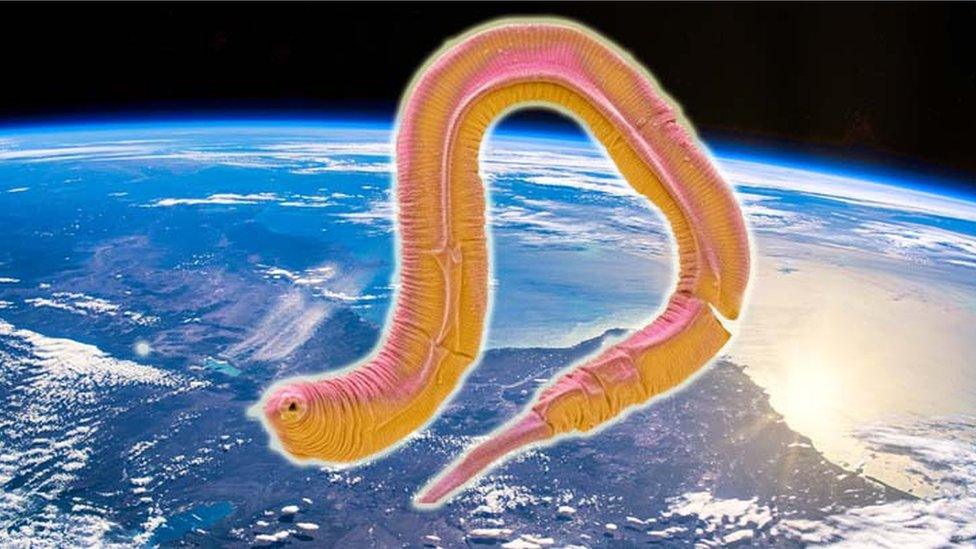Nasa: Hundreds of worms and baby squid head to the International Space Station
- Published
- comments

Hundreds of 1-millimetre worms are going on an epic journey - into space!
As part of research into how to stop human muscles from becoming weaker in space, the worms, plus other microscopic creatures, will be heading to the International Space Station.
The worms, known as Caenorhabditis elegans, share lots of similar characteristics as humans and will blast off on 6 June, 2021.
They too are affected by biological changes that happen when living in space so experts will be monitoring them to see how they physically react.
How will the worms get into space?
Scientists have prepared special travel pouches for the creatures
They will start their journey at the Kennedy Space Centre in Florida.
They'll take off from there in matchbox-sized containers loaded onto SpaceX's Cargo Dragon 2 spacecraft.
Once the worms arrive at the ISS they will be placed into an incubator.
This work will have implications not only for astronauts but also for many situations on Earth.
Dr Tim Etheridge, a professor who helped with the project said: "The experiment will give us even more new information on the molecules that cause muscle decline in space, and whether targeting these with novel drugs and interventions can help.
"This information can then build the foundations for safely sending humans on long-term missions into deep space."
What will the worms be able to show scientists?
The studies and research will be carried out here, on the International Space Station, not your average research lab!
It is hoped that the worms will be able to give insight into why humans lose muscle mass in space.
Not just why it happens, but also how to prevent it.
The team will attempt to find the exact molecules that cause these issues and test new therapies to prevent muscle loss.
Talking about the mission and its research, Dr Bethan Philips, a professor of clinical, metabolic and molecular physiology said:
"Since the dawn of the space age, there have been concerns that space travel can be harmful to astronauts. We are very excited that this latest mission will enable us to build on the work we have already done to not only further explore what causes muscle loss with spaceflight, but to also look at how to prevent it."
It's hoped that this research will not only help those who travel into space but people who stay on Earth.
Particularly those who have illnesses that affect muscles like muscular dystrophies which are a group of inherited genetic conditions that gradually cause the muscles to weaken.
What other creatures will be joining them?
These are baby bobtail squid
Its not just tiny worms going to the space station.
128 bobtail baby squid and 5,000 tardigrades, more commonly referred to as water bears, will also join the flight.
Baby squid are known to have a similar immune system to humans and the research could help scientists keep humans in space healthier.
The experiment's principal investigator said: "Animals, including humans, rely on our microbes to maintain a healthy digestive and immune system. We do not fully understand how spaceflight alters these beneficial interactions."
The water bears are there to try to help experts understand how human bodies can cope with stress when in space.
These tiny creatures can tolerate environments more extreme than most animals which means they are perfect for studying how life responds and adapts to extreme environments.
- Published8 December 2018
- Published28 May 2021
